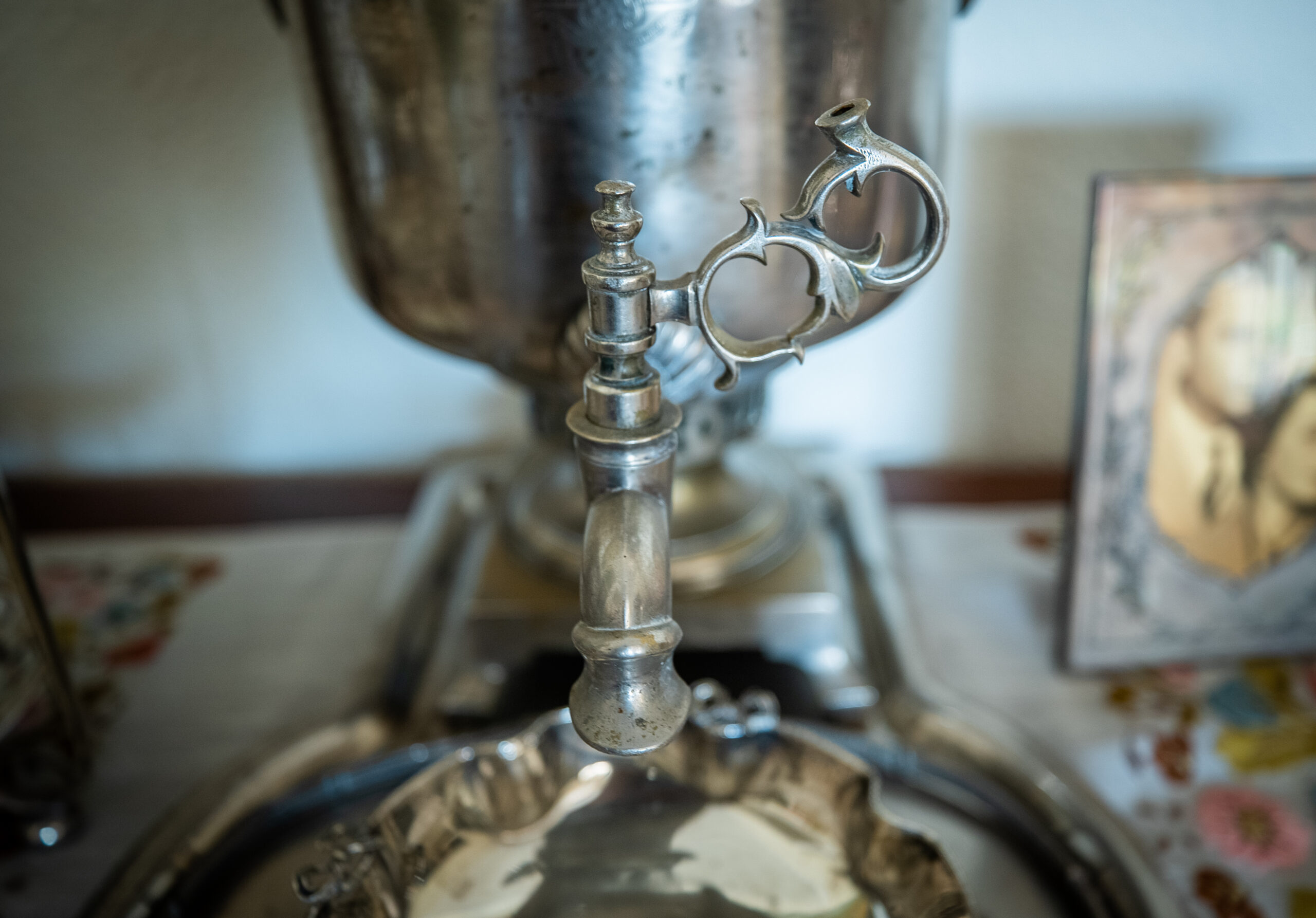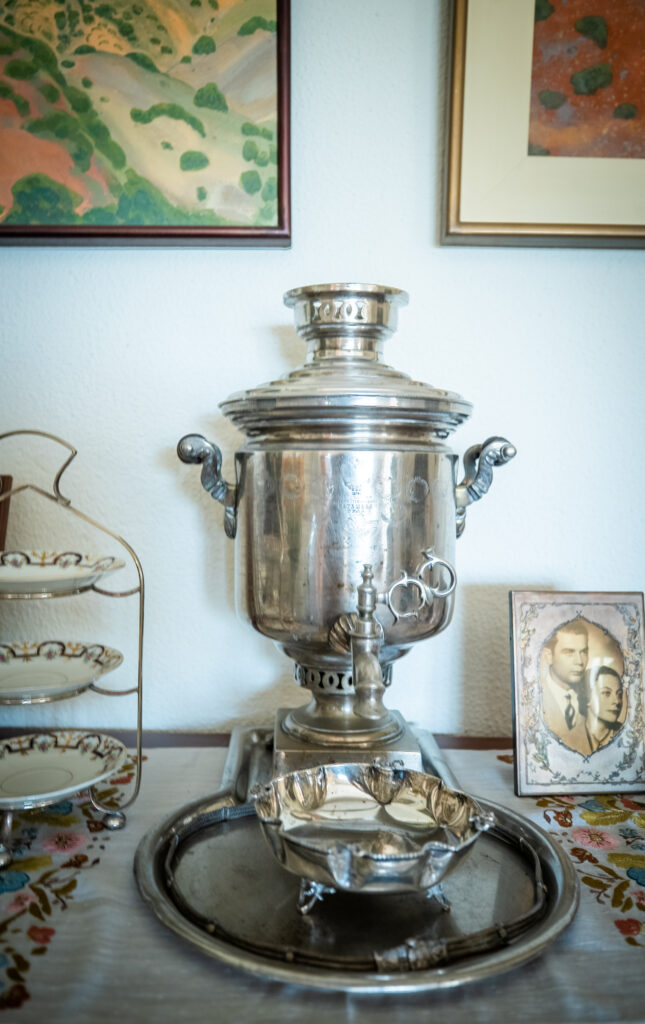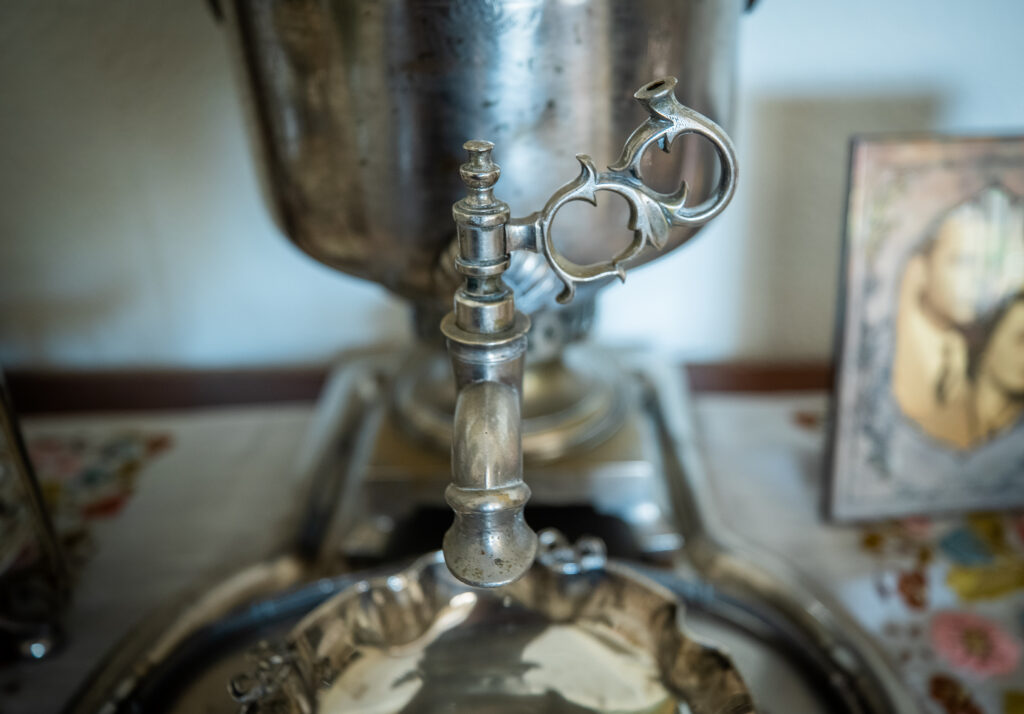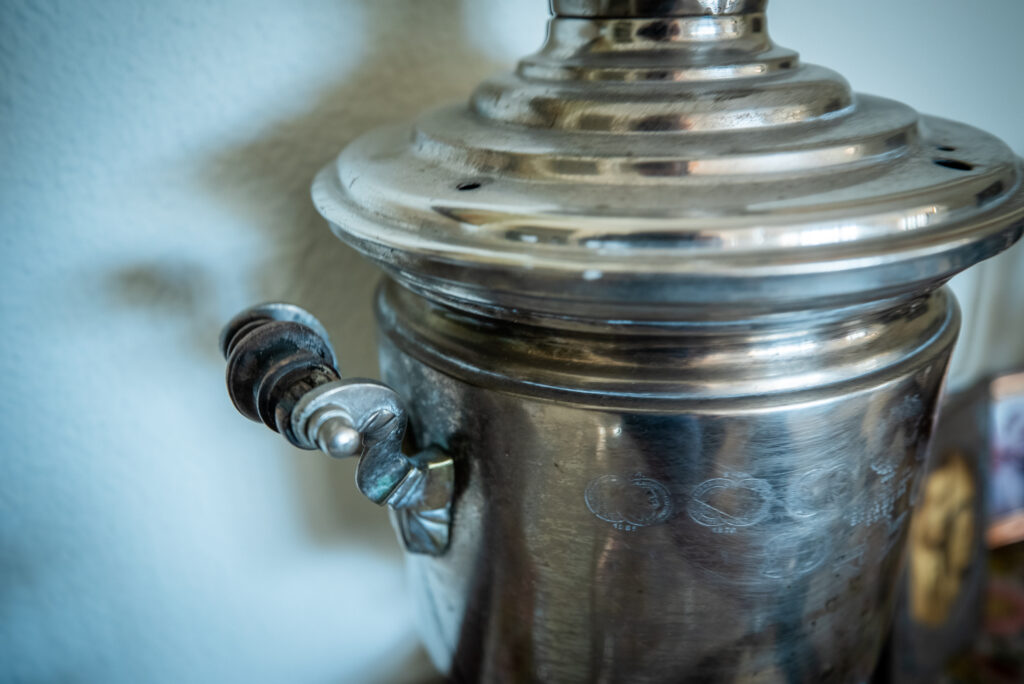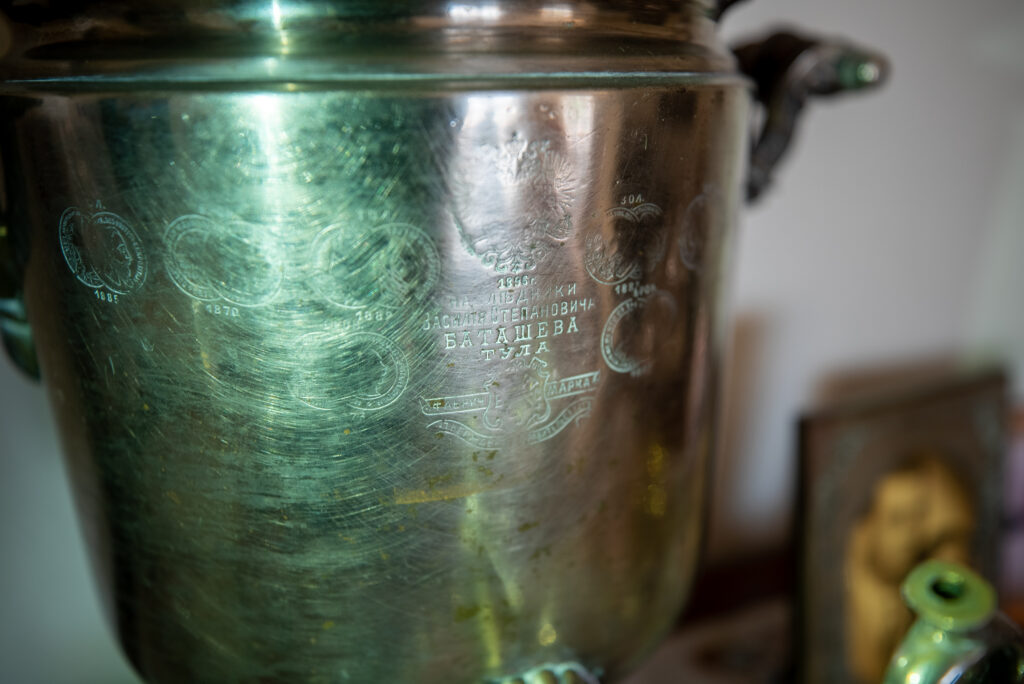The objects the refugees brought with them from their homelands remained in use for years and later were often repurposed and given new life. From Sourmena (Sürmene) in Pontus, the Papadopoulou family brought a samovar used as a ‘mouslouki’ (a tin water pitcher).
Ioannis Papadopoulos was born in 1895 and graduated from the Phrontisterion of Trapezous (Trabzon), a Greek educational institution, in 1914. He went on to study medicine in Kiev. When the October Revolution broke out, he decided to leave the USSR and walk all the way back to Greece. After a series of ordeals, including his arrest for espionage in Belgrade, he finally ended up in Thessaloniki where he reunited with his family who had arrived in the city before 1922. They settled in a big house in Ano Poli on 5 Chrysippou Street (the street does not exist anymore since it gave way to the widening of Konstantinou Gratsiou Street and two apartment blocks). Ioannis became one of the first customs officers in Thessaloniki and was a customs officers’ union organiser for years.
Ioannis married Kleio, the daughter of Marianthi Lefkiadou and Anestis Melidis, a trader and prominent figure of Sampsounta who was executed by the Turks. The Lefkiadou family was also a prominent family in Sampsounta, where they ran a printing and book-binding company, a business activity they continued in Thessaloniki. Besides Kleio, Anestis and Marianthi had three other children, Kornilia, Danai and Charilaos.
Ioannis and Kleio had two children, Anestis and Michalis, with the latter dying when he was a toddler. After his father’s death, Anestis dropped out of university and became a customs officer. He was an important poet and literary critic, known by his pen name, Evangelou. He married Ntina (Konstantia) Paroutis, a teacher, with whom they went on to have two children, Kleio and Giannis.
Ntina Papadopoulou preserved the samovar brought over by the Papadopoulou family. Made in the city of Tula in Russia, it was restored and can be found in Ntina’s house, in Oraiokastro, Thessaloniki.
